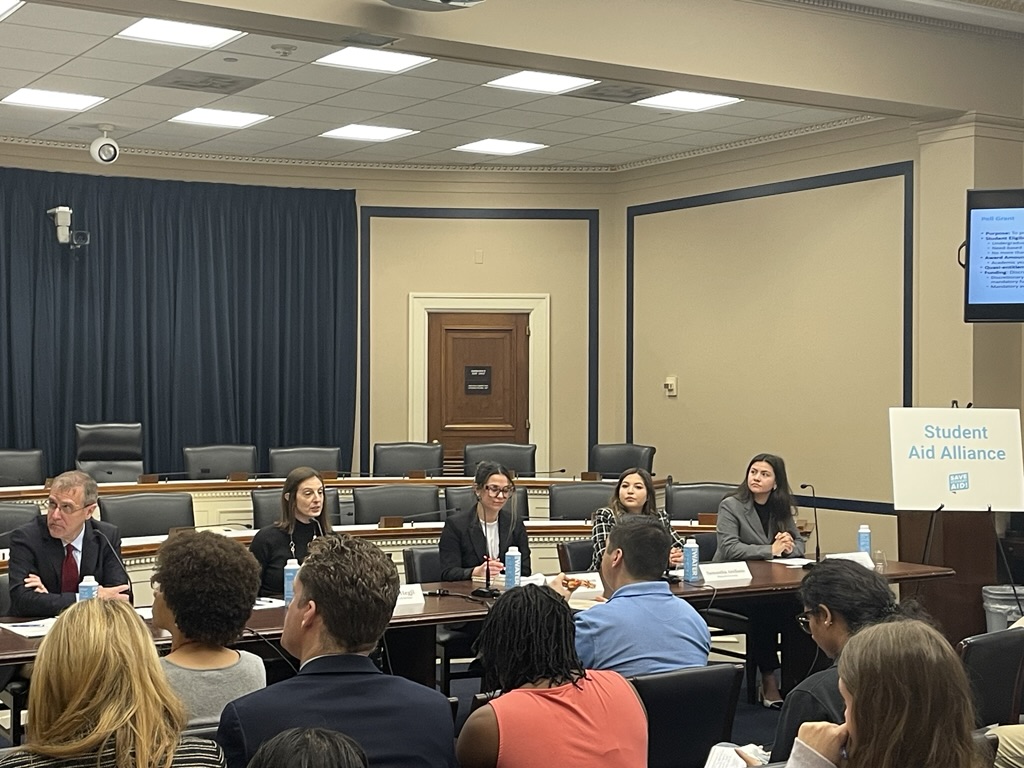
By Pamela Davidson
The Student Aid Alliance, a coalition of more than 40 higher education organizations, recently held a briefing on Capitol Hill to remind policymakers about how crucial federal student aid is to millions of American students and their families. AAU is on the Student Aid Alliance’s steering committee and helped organize and plan the event.
The “Lunch and Learn: Federal Student Aid 101” briefing highlighted the various types of federal student aid programs authorized by the Higher Education Act of 1965 to help students gain access to and afford a college education. Both Democrats and Republicans have historically supported robust funding for federal student aid programs.
During the briefing, attendees heard from an expert from the Congressional Research Service about the different types of federal student aid programs. These include Pell Grants, which provide aid to more than 7 million undergraduate students from low- and middle-income families to attend college; the Federal TRIO Program, which provides academic support and services to disadvantaged students and helps them succeed in college; the Gaining Early Awareness and Readiness in Undergraduate Programs (GEAR UP), which supports college readiness for low-income students; the Federal Supplemental Educational Opportunity Grant, which provides targeted aid to more than 1.6 million students with exceptional financial need; and the Federal Work-Study program, which provides institutions of higher education with funding to employ undergraduate and graduate students part-time in order to help students pay for college and gain valuable work experience.
Attendees also heard from students at various higher education institutions across the country about how access to federal student aid enabled them to attend and succeed in college. For example, Binghamton University student, Brianna Mendelson, spoke about how she grew up in a low-income family; after her father passed away, her mother raised her and her twin sister while relying on a food pantry and other local resources. Brianna talked about how she would not have been able to pursue a postsecondary education without federal financial aid and the assistance of federal aid counselors. Brianna participates in the Federal TRIO Program and receives the maximum Pell Grant to help her afford college.
Two students from Marquette University and Colorado State University also spoke about how they used a mix of federal Pell Grants, other campus-based aid, and student loans to help finance their postsecondary education. They talked about the importance of increasing the Pell Grant award to help further offset expenses, as well as the urgency of funding federal student aid programs.

Toward the end of the briefing, the Student Aid Alliance shared its recommendations for modest increases to the funding levels of federal student aid programs in FY26 and reminded attendees of the value of a college education.
As the Alliance wrote in a recent letter to lawmakers, by 2033, the number of jobs requiring a postsecondary credential will significantly outpace the number of jobs that will not require one. Further “College graduates earn more than $1.2 million more over their lifetime than high school graduates and are far more likely to be employed and pay taxes.”
“Without the strong partnership between the federal government, states, institutions, and families, millions of students would not be able to pursue their postsecondary education,” the Alliance noted.
Pamela Davidson is associate vice president for government relations and public policy at AAU.